磷酸氢钙二水,Calcium hydrogenphosphate dihydrate,98%
产品编号:Sigma-307653| CAS NO:7789-77-7| MDL NO:MFCD00149621| 分子式:CaHPO4 · 2H2O| 分子量:172.09
二水合磷酸氢钙,也称为CHPD或DCPD。二水合磷酸氢钙在泌尿系结石中很常见。磷酸氢钙二水合物可用作赋形剂,如稀释剂、吸附剂。药用辅料,或称药用辅料,是指除药物成分外,在制药过程中使用的其他化学物质。药用辅料一般是指药物制剂中的非活性成分,可以提高药物制剂的稳定性、溶解性和加工性。药用辅料也会影响联合给药药物的吸收、分布、代谢和消除(ADME)过程。
本网站销售的所有产品仅用于工业应用或者科学研究等非医疗目的,不可用于人类或动物的临床诊断或者治疗,非药用,非食用,
| 产品名称 | 磷酸氢钙二水 |
|---|---|
| 英文名称 | Calcium hydrogenphosphate dihydrate,98% |
| CAS编号 | 7789-77-7 |
| 产品描述 | 二水合磷酸氢钙,也称为CHPD或DCPD。二水合磷酸氢钙在泌尿系结石中很常见。磷酸氢钙二水合物可用作赋形剂,如稀释剂、吸附剂。药用辅料,或称药用辅料,是指除药物成分外,在制药过程中使用的其他化学物质。药用辅料一般是指药物制剂中的非活性成分,可以提高药物制剂的稳定性、溶解性和加工性。药用辅料也会影响联合给药药物的吸收、分布、代谢和消除(ADME)过程。 |
| 产品熔点 | 109°C -H₂O |
| 产品沸点 | 158ºC at 760 mmHg |
| 产品密度 | 2.31 |
| 精确质量 | 171.944962 |
| PSA | 111.69000 |
| 外观性状 | 白色结晶固体 |
| 折射率 | 1.5394 |
| 溶解性 | 每100毫升水中的溶解克数: 4.303×10-3/20℃ |
| 稳定性 | 有二水磷酸氢钙和无水磷酸氢钙两种。在低于36℃时,二水物是稳定的;高于36℃时,无水物是稳定的。常用的为二水物CaHPO4·2H2O,其相对密度为2.306,微溶于水,不溶于乙醇,易溶于稀盐酸、硝酸、醋酸,在空气中稳定,加热至100℃以上,逐渐失去结晶水,加热至175℃以上转化为CaHPO4,在400~430℃时,失去结晶水而成焦磷酸钙Ca2P2O7。结晶水即使在100℃以下,也会慢慢失去。 |
| 储存条件 | 1.食品级塑料袋外套编织袋包装。 2.应贮存在通风、干燥、阴凉、清洁的库房内。包装要密封,防潮。不得与有毒物品和其他污染物品共贮混运。运输时要防雨淋和烈日暴晒。装卸时要小心轻放,防止包装破损。失火时,可用水、沙土、各种灭火器进行扑救。 |
相关文档
化学品安全说明书(MSDS)
下载MSDS质检证书(COA)
相关产品
| 危害码 (欧洲) | Xi:Irritant |
|---|---|
| 风险声明 (欧洲) | R36/37/38 |
| 安全声明 (欧洲) | S26-S36 |
| 危险品运输编码 | NONH for all modes of transport |
| WGK德国 | 1 |
|
Section1. IDENTIFICATION OF THE SUBSTANCE/MIXTURE Product identifiers Product name: Calcium phosphate dibasic dihydrate CAS-No.: 7789-77-7 Section2. HAZARDS IDENTIFICATION
Classification of the substance or mixture
Classification according to Regulation (EC) No 1272/2008 [EU-GHS/CLP] Skin irritation (Category 2) Eye irritation (Category 2) Specific target organ toxicity - single exposure (Category 3) Classification according to EU Directives 67/548/EEC or 1999/45/EC Irritating to eyes, respiratory system and skin. Label elements Labelling according Regulation (EC) No 1272/2008 [CLP] Pictogram Signal wordWarning Hazard statement(s) Causes skin irritation. Causes serious eye irritation. May cause respiratory irritation. Precautionary statement(s) Avoid breathing dust/ fume/ gas/ mist/ vapours/ spray. P305 + P351 + P338IF IN EYES: Rinse cautiously with water for several minutes. Remove contact lenses, if present and easy to do. Continue rinsing. Supplemental Hazardnone Statements According to European Directive 67/548/EEC as amended. Hazard symbol(s) R-phrase(s) R36/37/38Irritating to eyes, respiratory system and skin. S-phrase(s) S26In case of contact with eyes, rinse immediately with plenty of water and seek medical advice. S36Wear suitable protective clothing. Other hazards - none Section3. COMPOSITION/INFORMATION ON INGREDIENTS Substances Formula: HCaO4P · 2H2O Molecular Weight: 172,09 g/mol ComponentConcentration Calcium hydrogenorthophosphate dihydrate CAS-No.7789-77-7- EC-No.231-826-1 Section4. FIRST AID MEASURES Description of first aid measures General advice Consult a physician. Show this safety data sheet to the doctor in attendance. If inhaled If breathed in, move person into fresh air. If not breathing, give artificial respiration. Consult a physician. In case of skin contact Wash off with soap and plenty of water. Consult a physician. In case of eye contact Rinse thoroughly with plenty of water for at least 15 minutes and consult a physician. If swallowed Never give anything by mouth to an unconscious person. Rinse mouth with water. Consult a physician. Most important symptoms and effects, both acute and delayed Indication of any immediate medical attention and special treatment needed no data available Section5. FIREFIGHTING MEASURES Extinguishing media Suitable extinguishing media Use water spray, alcohol-resistant foam, dry chemical or carbon dioxide. Special hazards arising from the substance or mixture Thermal decomposition may produce toxic fumes of phosphorus oxides and/or phosphine Oxides of phosphorus, Calcium oxide Advice for firefighters Wear self contained breathing apparatus for fire fighting if necessary. Further information no data available Section6. ACCIDENTAL RELEASE MEASURES Personal precautions, protective equipment and emergency procedures Use personal protective equipment. Avoid dust formation. Avoid breathing vapors, mist or gas. Ensure adequate ventilation. Evacuate personnel to safe areas. Avoid breathing dust. Environmental precautions Do not let product enter drains. Methods and materials for containment and cleaning up Pick up and arrange disposal without creating dust. Sweep up and shovel. Keep in suitable, closed containers for disposal. Reference to other sections For disposal see section 13. Section7. HANDLING AND STORAGE Precautions for safe handling Avoid contact with skin and eyes. Avoid formation of dust and aerosols. Provide appropriate exhaust ventilation at places where dust is formed.Normal measures for preventive fire protection. Conditions for safe storage, including any incompatibilities Store in cool place. Keep container tightly closed in a dry and well-ventilated place. Specific end uses no data available Section8. EXPOSURE CONTROLS/PERSONAL PROTECTION Control parameters Components with workplace control parameters Exposure controls Appropriate engineering controls Handle in accordance with good industrial hygiene and safety practice. Wash hands before breaks and at the end of workday. Personal protective equipment Eye/face protection Safety glasses with side-shields conforming to EN166 Use equipment for eye protection tested and approved under appropriate government standards such as NIOSH (US) or EN 166(EU). Skin protection Handle with gloves. Gloves must be inspected prior to use. Use proper glove removal technique (without touching glove's outer surface) to avoid skin contact with this product. Dispose of contaminated gloves after use in accordance with applicable laws and good laboratory practices. Wash and dry hands. The selected protective gloves have to satisfy the specifications of EU Directive 89/686/EEC and the standard EN 374 derived from it. Body Protection impervious clothing, The type of protective equipment must be selected according to the concentration and amount of the dangerous substance at the specific workplace. Respiratory protection For nuisance exposures use type P95 (US) or type P1 (EU EN 143) particle respirator.For higher level protection use type OV/AG/P99 (US) or type ABEK-P2 (EU EN 143) respirator cartridges. Use respirators and components tested and approved under appropriate government standards such as NIOSH (US) or CEN (EU). Section9. PHYSICAL AND CHEMICAL PROPERTIES Information on basic physical and chemical properties a) AppearanceForm: crystalline Colour: white b) Odourno data available c) Odour Thresholdno data available d) pHno data available e) Melting point/freezingno data available point f) Initial boiling point and no data available boiling range g) Flash pointno data available h) Evaporation rateno data available i) Flammability (solid, gas) no data available j) Upper/lowerno data available flammability or explosive limits k) Vapour pressureno data available l) Vapour densityno data available m) Relative density2,310 g/cm3 n) Water solubilityno data available o) Partition coefficient: n- no data available octanol/water p) Autoignitionno data available temperature q) Decompositionno data available temperature r) Viscosityno data available s) Explosive propertiesno data available t) Oxidizing propertiesno data available Other safety information no data available Section10. STABILITY AND REACTIVITY Reactivity no data available Chemical stability no data available Possibility of hazardous reactions no data available Conditions to avoid no data available Incompatible materials Strong oxidizing agents Hazardous decomposition products Other decomposition products - no data available Section11. TOXICOLOGICAL INFORMATION Information on toxicological effects Acute toxicity no data available Skin corrosion/irritation no data available Serious eye damage/eye irritation no data available Respiratory or skin sensitization no data available Germ cell mutagenicity no data available Carcinogenicity IARC:No component of this product present at levels greater than or equal to 0.1% is identified as probable, possible or confirmed human carcinogen by IARC. Reproductive toxicity no data available Specific target organ toxicity - single exposure Inhalation - May cause respiratory irritation. Specific target organ toxicity - repeated exposure no data available Aspiration hazard no data available Potential health effects InhalationMay be harmful if inhaled. Causes respiratory tract irritation. IngestionMay be harmful if swallowed. SkinMay be harmful if absorbed through skin. Causes skin irritation. EyesCauses serious eye irritation. Additional Information RTECS: Not available Section12. ECOLOGICAL INFORMATION Toxicity no data available Persistence and degradability no data available Bioaccumulative potential no data available Mobility in soil no data available Results of PBT and vPvB assessment no data available Other adverse effects no data available Section13. DISPOSAL CONSIDERATIONS Waste treatment methods Product Offer surplus and non-recyclable solutions to a licensed disposal company. Contact a licensed professional waste disposal service to dispose of this material. Dissolve or mix the material with a combustible solvent and burn in a chemical incinerator equipped with an afterburner and scrubber. Contaminated packaging Dispose of as unused product. Section14. TRANSPORT INFORMATION UN number ADR/RID: -IMDG: -IATA: - UN proper shipping name ADR/RID: Not dangerous goods IMDG: Not dangerous goods IATA:Not dangerous goods Transport hazard class(es) ADR/RID: -IMDG: -IATA: - Packaging group ADR/RID: -IMDG: -IATA: - Environmental hazards ADR/RID: noIMDG Marine pollutant: noIATA: no Special precautions for user no data available Section15. REGULATORY INFORMATION This safety datasheet complies with the requirements of Regulation (EC) No. 1907/2006. Safety, health and environmental regulations/legislation specific for the substance or mixture no data available Chemical Safety Assessment SECTION 16 - ADDITIONAL INFORMATION N/A |
|
~% 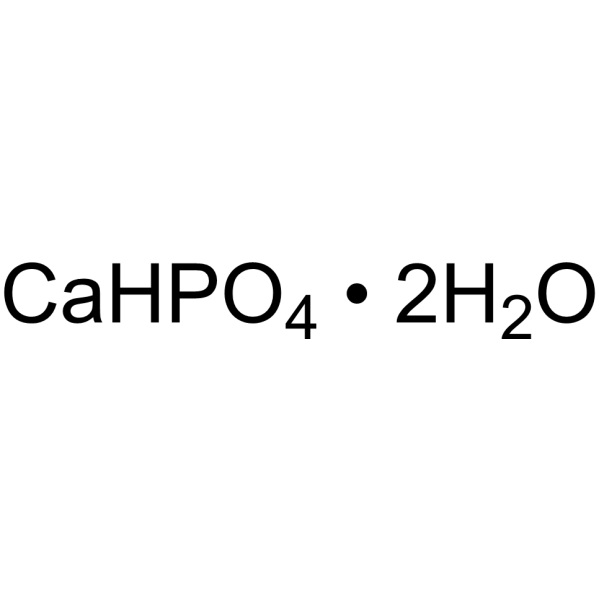
7789-77-7 |
| 文献:Journal of Alloys and Compounds, , vol. 394, # 1-2 p. 13 - 18 |
| 上游产品 2 | |
|---|---|
| 下游产品 3 | |


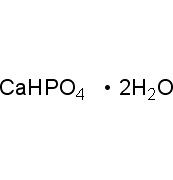

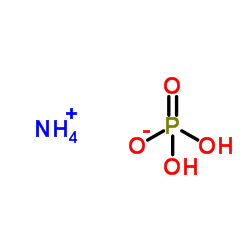
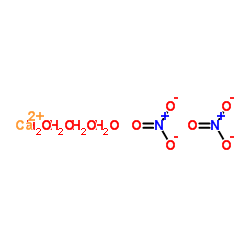
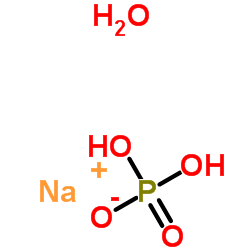





 浙公网安备 33010802013016号
浙公网安备 33010802013016号